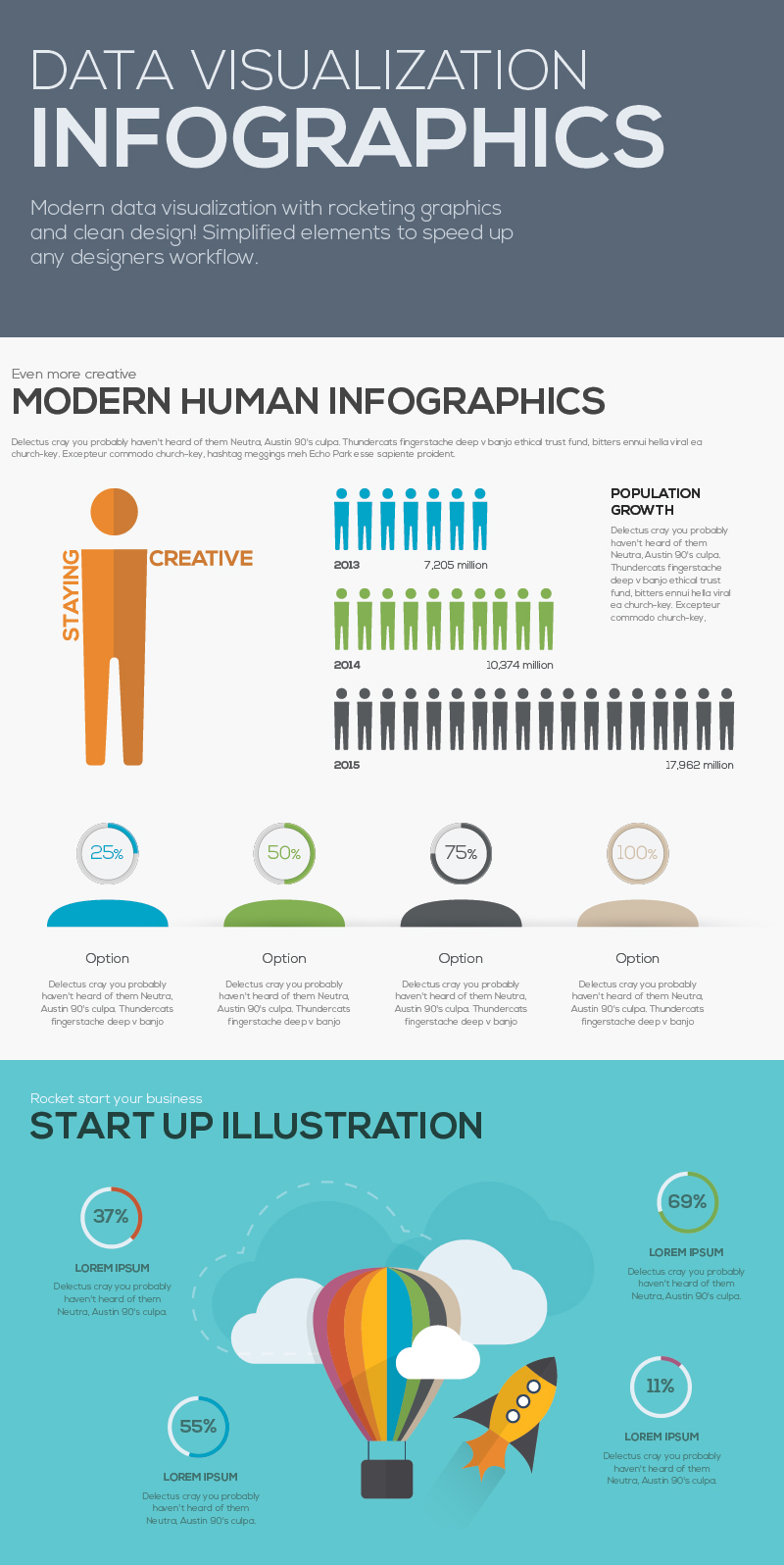

The comparison of two mass communications university courses at different institutions, one larger online course and one medium sized blended one, demonstrates two different approaches to the infographic assignment and describes its effectiveness in supporting visual digital literacy skills development, from instructors' and students' perspectives.

Through examining two classroom examples, this paper attempts to demonstrate the pedagogical benefits of integrating infographic assignments into an online or blended course, and to detail some of the technical and instructional challenges involved.

Rather than present this position in a text-based format, students must design an information visualization to illustrate their argument, using tools such as those from Adobe Creative Cloud (Photoshop, InDesign, Illustrator), or using online design tools to semi-automate the process (such as Piktochart, Infogr.am, or Pixlr). Similar to a traditional research essay, an infographic assignment challenges students to visually communicate a thesis, supported by citations and statistics sourced from the scholarly literature and the popular press. An infographic, otherwise known as a data visualization, is created using graphic design software, and uses pie charts, icons, decorative fonts, diagrams (and the like) to illustrate information and statistics – creating a visual narrative. Incorporating an infographic assignment in the post-secondary classroom (online or on campus) is one way to respond to educators' need to develop assessment tools and design curriculum that reflects the information and media literacy demands of contemporary digital culture and commerce (Osterman 2013). Visual literacy is generally understood as a process that includes finding images, analyzing them, evaluating them, applying them to a purpose, and producing them (Conner 2012). Even those students who are part of the Facebook generation, growing up participating in a highly visual online culture do not necessarily have the skills to engage critically and effectively with images and media in an academic environment (Hattwig 2013). Today, for users to successfully navigate the web they must have the digital visual literacy skills to comprehend and evaluate both graphical information and multimedia messages (Lambert 2008). In what some have called the rise of the visual culture of the web, images, photos and videos are becoming a form of social currency to be shared and curated (Verma 2013 Walter 2012 Rainie 2012 Kern 2013). Keywords: online learning, communications, graphic design, Internet research, peer-to-peer collaboration, teaching IntroductionĪdvances in information and communication technologies have raised new digital literacy challenges, including a pressing need for visual communication skills (Osterman 2013). The paper suggests that this kind of creative assignment requires students to practice exactly those digital competencies required to participate in an increasingly visual digital culture. The paper includes practical insights and identifies best practices emerging from the authors' classroom experience with the infographic assignment, and from student feedback. The paper demonstrates how incorporating a research-based graphic design assignment into coursework challenges and encourages students' visual digital literacies. Data and insights are drawn from two case studies, both from the communications field, one online class and a blended one, taught at two different institutions. It argues for the benefits of adopting this type of creative assignment for teaching and learning, and considers the pedagogic and technical challenges that may arise in doing so. This position paper examines the use of infographics as a teaching assignment in the online college classroom. Sidneyeve Matrix, Queen's University, Canada & Jaigris Hodson, Ryerson University, Canada Abstract


 0 kommentar(er)
0 kommentar(er)
